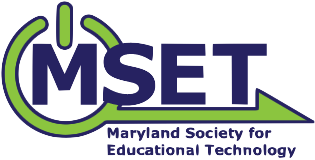By AMANDA KREMNITZER
The ProjectLIT community was established as a result of The Atlantic’s article on the effect of growing up in a “book desert.” The community’s founder, Jarred Amato, has facilitated the growth of the movement through social media. So when, like Amato, I followed my 8th grade students to high school, I knew that social media and engaging books would be the start to a blossoming chapter at Tuscarora High School.
It’s easy to consider Tuscarora a “book desert” as there is not a library within the feeder system. For a student to walk from the school to the nearest library would take over an hour. And so, a social media presence would not be enough to get students reading. We had to work to bring books into their hands.
Our group, which consists primarily of 9th and 10th grade students, use Twitter and Instagram to share updates about readings and donations. Students are in charge of these accounts, which promotes cognition on how to use social media responsibly - especially when representing a group and not just an individual. The students have created hashtags to trend communication efforts and followed other groups to help establish who they want to be.
But behind the books is an incredible system of organization that freshmen and sophomores are still adjusting to on Google Drive. There’s no Google Classroom to label (though we could have used that as our hearht of information). Folders isolate work, and teams responsible for that work know exactly where to go to find what they need. However, the Drive didn’t help us disseminate information to the community - and what’s a community without, well, a community?
Google Sites
The students decided that we needed on place for people to go that included our Twitter feed and updates about out initiatives. And so began our venture into Google Sites. The website let us do just that: update things quickly, share the site out on social media, and make it our hearth for everything we wanted to do. Students have editing rights, which allows them to make a decision as a group, and share the opportunity to update the design. They have updated our site to include our group’s goals and book drives we ran to donate books to one of our feeder elementary schools, as well as wishlists and Donorschoose campaigns.
Google Bulletin
However, our growth is not quite complete. As we continue to create the foundation of our book club, we’re continually expanding our use of technology. We’re playing with Google Bulletin, a program that runs similar to programs like NextDoor - which limits who can post or see posts based on the area in which you are located. This will come in handy as we plan and share out book club information and can encourage more involvement from our community.
 Using tools like Flipgrid, which are easily found within the classroom, provide students with familiarity while enriching our experiences.
Using tools like Flipgrid, which are easily found within the classroom, provide students with familiarity while enriching our experiences.
Flipgrid
We have dabbled with Flipgrid so that students can share their reactions to our readings in a safe place, and are working to use MyMaps from Google to track where our book club stories take place, where the authors are from, and how the two aspects are combined to create a new perspective in literature. And next year, we hope to add Google Hangouts with authors and other book clubs to enrich our student discussions as well as podcasts and book trailers through WeVideo.
Throughout the process of our book club’s development, I’ve been most impressed with the student’s use of the technology they already know. Students who have designed posters have used platforms they have used in other classes - infographic makers like Piktochart, for example. And students who are working on a t-shirt design, logo designs, or any other image for our club have used software for art that I can’t possibly understand (digital art is such an unfathomable thing for me).
In the end, our community isn’t about technology for the sake of technology. If anything, this book club has taught me that students already think purposefully about the technology they use to communicate and spread awareness. Our book club will continually weigh the benefits of each technology so that we are using the most efficient tech tools in order to get the biggest payoff. And it will continue to work because at the heart of the community is a group of students who care about saturating their community with engaging literature.
Amanda Kremnitzer is an English teacher in Frederick County Public Schools and a ProjectLit Site Coordinator for her school. She can be reached via Twitter at @MrsKremTHS.

